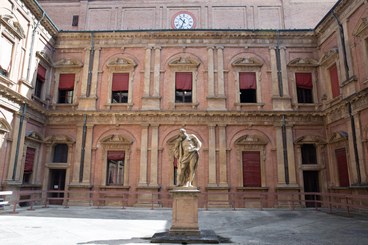Transatlantic Avant-gardism and Re-imagination of Ballet in Cuba

-
Date: 17 DECEMBER 2025 from 17:30 to 19:00
-
Event location: Aula III via Francesco Selmi 2 - In presence and online event
-
Type: Lectures

Speaker
ISA Visiting Fellow - Lester Tomé
Associate Professor Smith College, Northampton, Massachusetts
ATTENDANCE
-
in presence - book your seat
Book your seat within December 17, 12 p.m. The places will be assigned on “first come first served” basis.
The accessibility of the building is barrier-free, with pathway from the side entrance with building slide to the classroom located on the ground floor. Also available to persons with disabilities is a single-seat anthropometric bench with variable elevation and tilt positioned near the desk.
In 1920s Havana, the polymath and writer Alejo Carpentier, who decades later would become one of the most prominent Latin American novelists of the century, began his literary career by authoring ballet librettos. Carpentier’s librettos reimagined ballet in Cuba as an artform that, on the one hand, displayed a spectacular array of avant-garde styles such as Cubism and Futurism, and, on the other hand, drew inspiration from Afro-Cuban carnival traditions and religious rituals. At the same time, the librettos’ critique of Cuba's colonial and neocolonial history advanced a unique political conception of ballet. Carpentier’s ballet projects were also narrowly intertwined with early twentieth century developments in anthropology and cinema. His own ethnographic study of Afro-Cuban religious ceremonies provided the material for his librettos at a time when that type of fieldwork was a nascent method in cultural anthropology. Similarly, the cinematic conventions and kinetic sensibility popularized by an incipient film industry infused his eclectic ballet scenarios, which feature characters such as Charles Chaplin and scenes in which actors, dancers and cameramen make movies. This presentation should appeal to a broad scholarly community and general audience interested in ballet history, avant-garde art, Cuban music and dance, the history of anthropology, the cultural expressions of the African diaspora, and the intersections between dance, literature and cinema.
Subscribe
- book your seat - Transatlantic Published